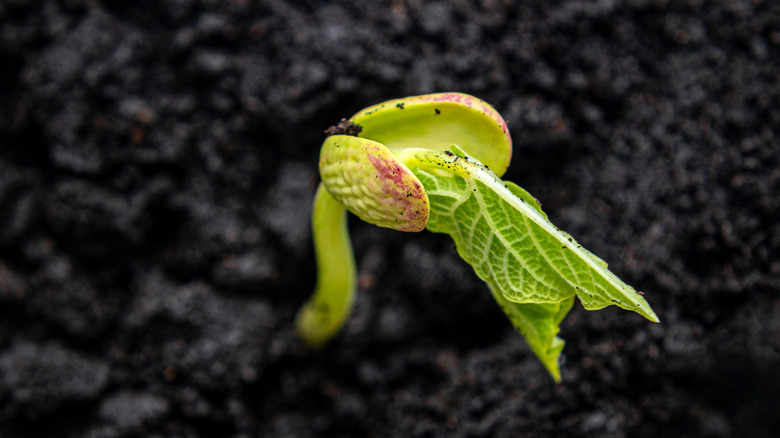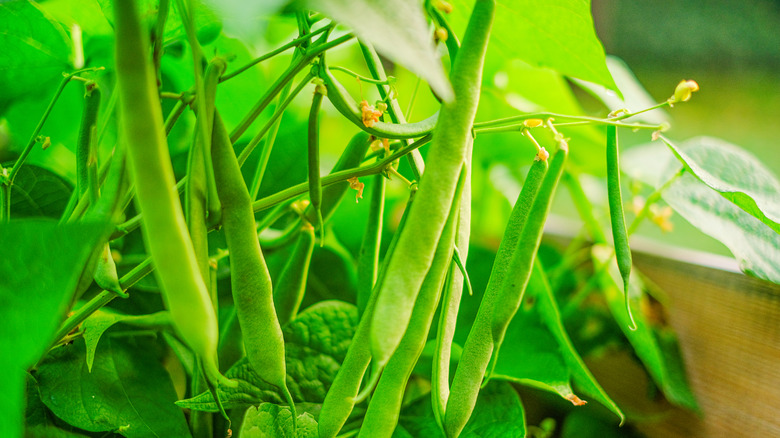The Best Time To Plant Green Beans For A Healthy Fall Harvest
School's back in session, the days are getting shorter, and fall decor is already tempting us from store shelves. If you don't have Labor Day plans this year, make it a gardening weekend for planting a fall vegetable patch with green beans as the star of the show. If you still have at least two months until your area's first frost, it's not too late to tuck a few rows of green bean seeds into your fall vegetable garden. Green beans are not frost-tolerant, so it's essential to plan accordingly so you can harvest before the mercury drops. At the end of August, the window for ensuring a fall green bean harvest is closing quickly, but with a bit of luck, you may have a bumper crop in under two months.
If you're new to growing in your area, knowing when your first frost typically arrives is essential. The USDA Hardiness Zone frost dates for each zone have a range of one month, which is helpful for planning. Or, you can get even more detailed information about when to expect the big chill by contacting your local university's extension office. If your area's growing season is coming to an end sooner than later, don't feel left out! Grow green beans year-round with these indoor gardening tips that will have you eating the freshest green bean casserole this Thanksgiving.
Tricks for growing unforgettable fall green beans
Many home gardeners claim that fall-grown green beans are tastier than ones planted in spring, so if you've got a long enough frost-free period, the end of August is typically the cutoff for a fall green bean crop. However, you may be able to cheat nature a bit by protecting plants with row covers and thick mulch in order to coax a fall bean harvest in chillier climes. Conversely, if your area has steamy fall weather, both mulch and row covers can shield the plants from temps that may prevent fruit from setting.
Bush beans, rather than pole varieties, are easy to grow in fall, since they tend to yield more beans more quickly. Seek out varieties with the shortest time to maturity; some bush varieties can provide you with fresh beans after as few as 50 days. There are some types of bush beans bred for a bit of frost resistance, like 'Blue Lake Bush', 'Dragon Tongue', and 'Maxibel' that may be worth trying.
Beans prefer well-draining soil in a spot with ample sun. Sow bush bean seeds about 1 inch deep and 2 inches apart. Leave 18 inches between each row. If your soil is particularly sandy, plant seeds slightly deeper than 1 inch, but be conservative with the extra depth, since planting too deep may spell doom for your sprouts. Water the seeds regularly, giving them 2 inches per square foot each week, and weed carefully. With a bit of luck and a warm fall, you may be biting into fresh beans before hitting the streets for trick-or-treating.

